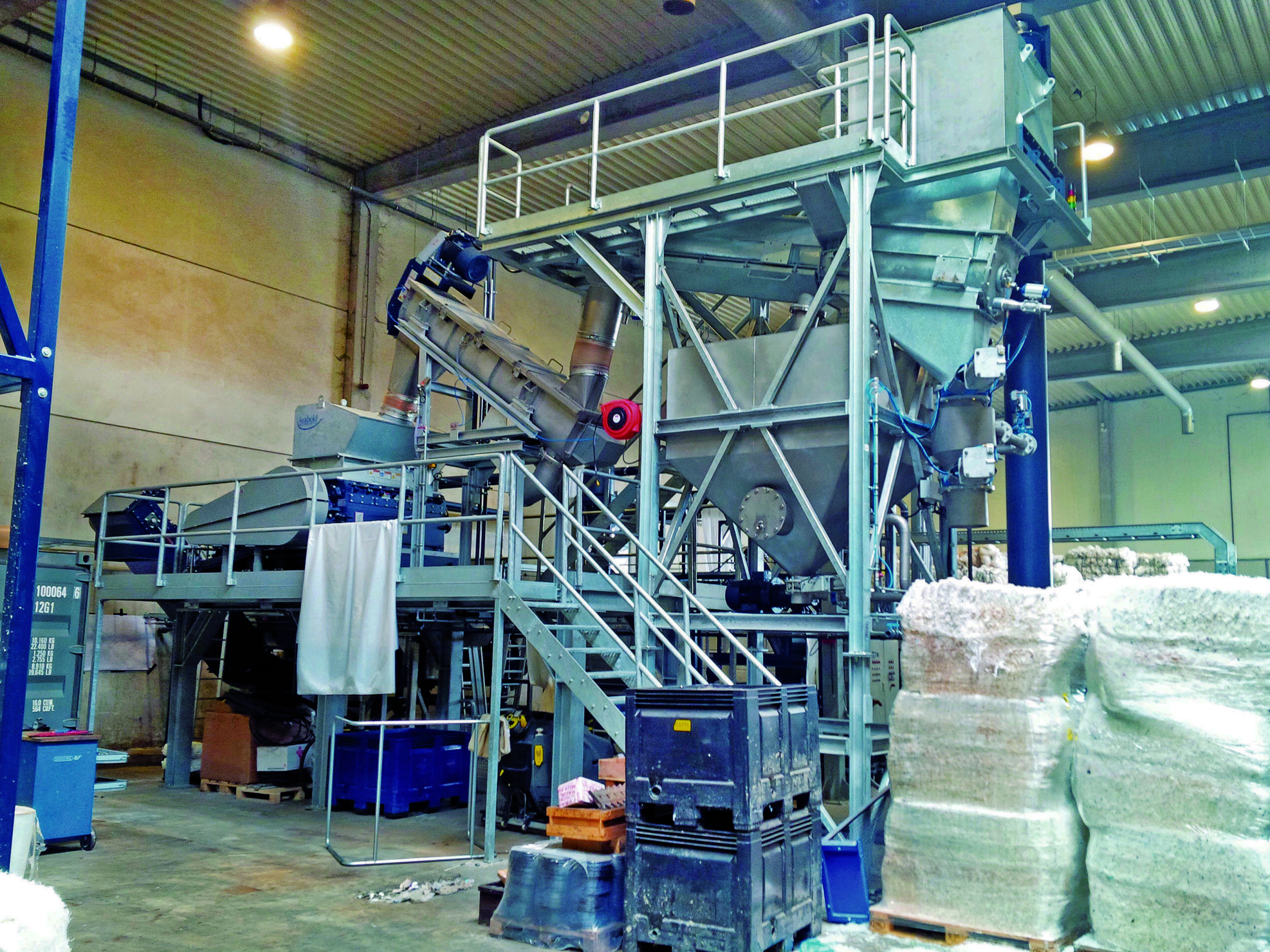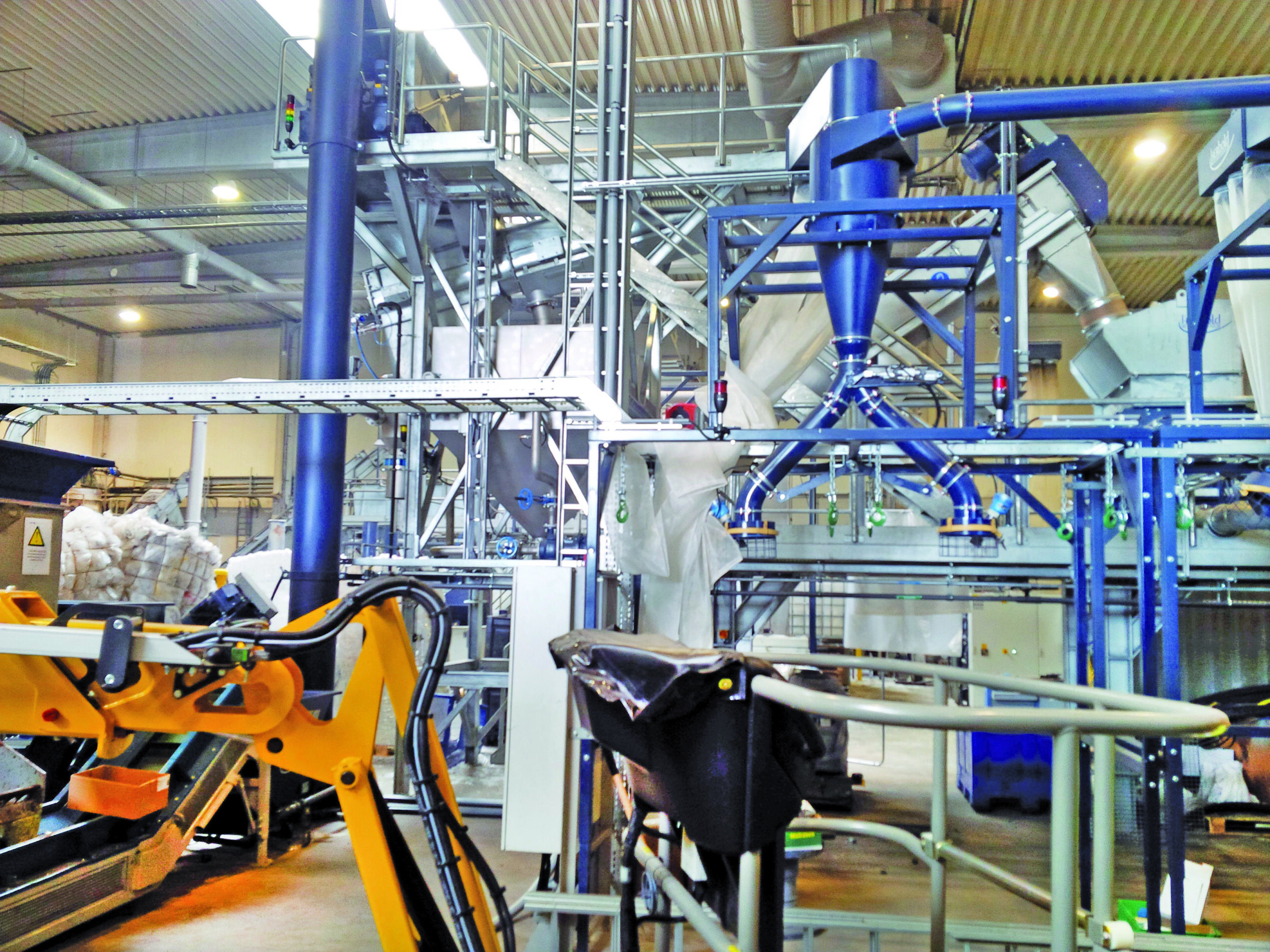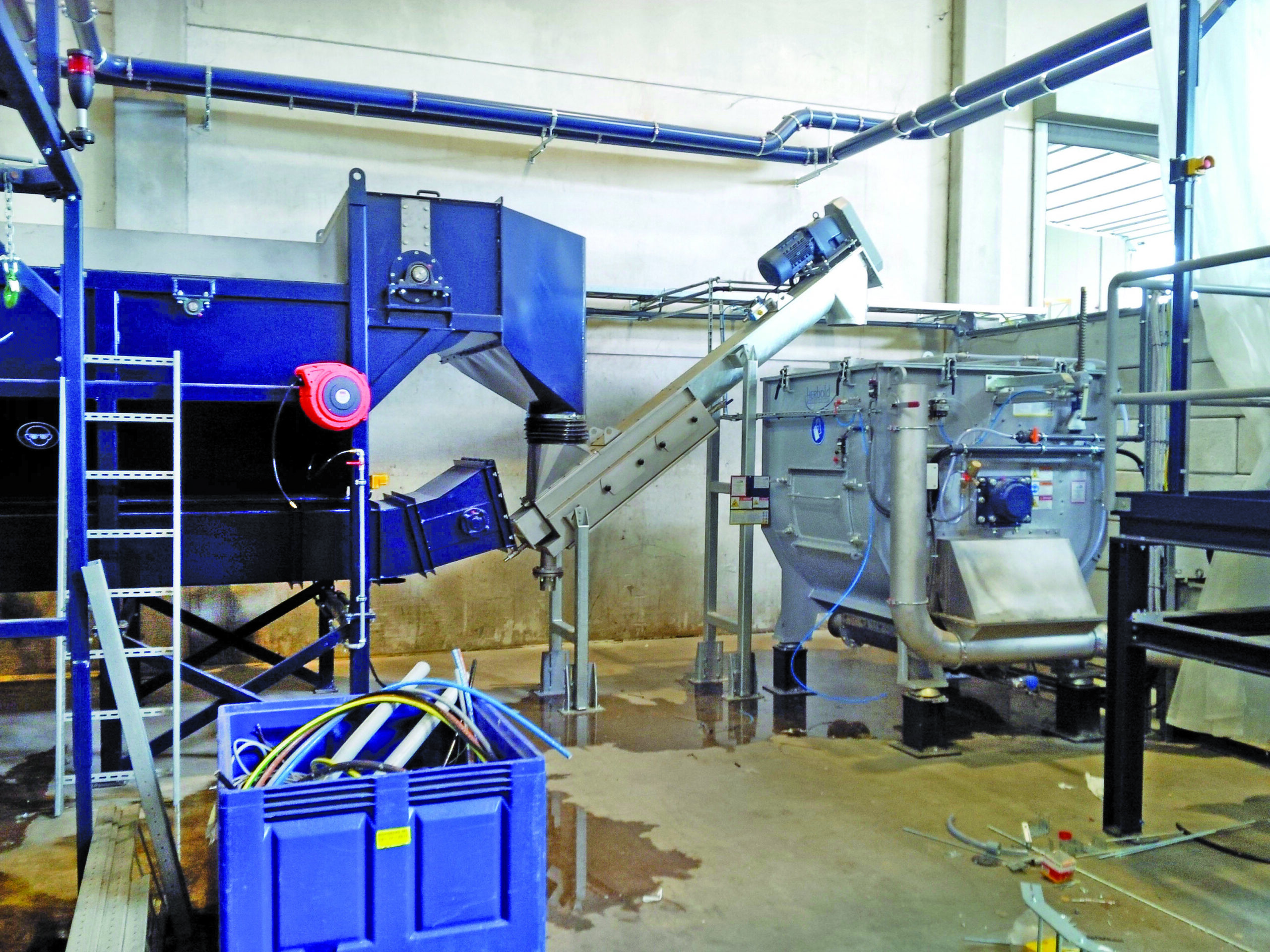The primary production of one metric ton of polypropylene – the world’s second most widely used plastic – requires some 5.2 metric tons of raw materials and releases 1.7 metric tons of greenhouse gases. By contrast, the use of one metric ton of polypropylene from secondary raw materials, such as plastic waste, results in only around 225 kilograms of resource consumption and just under one metric ton of greenhouse gases. Not to mention the fact that plastics that are not disposed of properly are an ever greater burden for our environment – and have been ending up in the world’s oceans for times now to the tune of about ten million tons a year. Therefore, there is no way other than recycling.
High purity of recyclates
Herbold Meckesheim has developed a new washing plant for shredding and cleaning hard PP plastics, which is used very successfully to produce re-granulates. Both, the high purity of the recyclates and the high throughput, plus the resilience and ease of maintenance, as well as the elevated level of automation, are praised. Designed for high capacities and a 24-hour continuous operation, two tons of PP flakes can be produced per hour with a residual moisture of less than one percent and a flake size of twelve millimeters or less.
What does a model plant look like in detail? First, at a big bag emptying station, the PP shredded material passes through the bottom outfeed of the big bag into a funnel with a volume of 0.5 cubic meters. From here, the material is discharged via a screw conveyor onto a conveyor belt. A large buffer hopper (Type SB2) of around two cubic meters ensures an even feeding of the material flow to the downstream coarse material separator. This is important in the case of a direct upstream shredder that discharges unevenly.
Figure 1: Coarse material separator, friction washer and wet cutting mill.
Photo: Herbold Meckesheim
Heavy-duty cutting mill
The reliable coarse material separator (Type SAS 50/430) segregates heavy foreign materials such as metals, stones or glass to protect the downstream units such as the cutting mill and the friction washer. To minimize loss of PP, upward flow by pump is integrated. The heavy-duty cutting mill (Type SML 60/145) carries out wet chopping of the PP bottles pre-shredded to 30 millimeters. Due to high friction, the mill achieves an excellent cleaning effect and, thanks to the addition of water, shows low wear on the blades, housing, and screen. The rotor has replaceable knife supports and the wear plates are exchangeable, which, combined with the optimal accessibility, makes the machine completely wear protected.
During the next step, the friction washer (Type FA 3000) intensively cleans the PP flakes. In the process, it separates dirty water as well as fine particles and paper fibres and conveys the product further to the separation tank. The rotor of the washer requires little maintenance thanks to exchangeable wear plates. In the separation tank (Type SSB 4000/1800) – using water as medium for density separation – the flakes are transported as floating material with a dewatering screw to the downstream mechanical dryer. Particles with a density beyond one gram per cubic centimeter, such as PVC or PET, are discharged by a chain scraper conveyor.
Figure 2: Double big bag station for PP flakes and sifted light materials (in the foreground).
Photo: Herbold Meckesheim
Low cleaning effort
The mechanical dryer (Type T 1015 PA) removes moisture from the washed PP flakes and evacuates residual impurities like paper fibres. Embedded in a hot-dip galvanized housing, the machine is equipped with a pneumatically operated mechanical cleaning with a rinsing appliance for the screen surface and exchangeable wear plates on the rotor blades for low cleaning effort. Pneumatic conveying takes the material to the air classifier (Type SZS 630/212), which has a zigzag channel for sifting out light materials such as foils, textiles, fibres or dust.
Finally, a double big bag station is available for bagging. Here, the two products, light materials and cleaned PP flakes, are pneumatically packed into the big bags. The entire plant can be controlled automatically for the convenience of the customer with a comfort touch panel (Siemens S7-1500). Fluctuations in the material are handled by targeted control of the plant components, guaranteeing a maximum performance. The smart and automatic control system ensures an efficient operation with low manpower requirements.
Figure 3: Separation tank, dewatering screw and mechanical dryer.
Photo: Herbold Meckesheim
Herbold Meckesheim GmbH
Industriestr. 33
D-74909 Meckesheim
Germany
Tel: +49/6226/932-0 Fax: +49/6226/932-495
herbold@herbold.com
www.herbold.com
About Herbold:
Herbold Meckesheim is leading recycling specialist for the plastics industry. Worldwide, the plants ensure that plastic waste is reduced through recycling. Both the pure waste from the plastics processing industry and used, mixed and contaminated plastics are processed. Machines from Herbold Meckesheim are also used in the fine grinding of plastic granulates and waste or in the waste processing, raw material recovery and material preparation of various industrial processes. Another special feature is the development of the machines in the company’s own pilot plant. Herbold Meckesheim is today managed in the fourth generation by Karlheinz and Werner Herbold. More than 200 employees at the headquarters and the staff of the international agencies accompany machines that are custom-made to fit the requirements from the conception stage through commissioning to the end of their commercial use.







